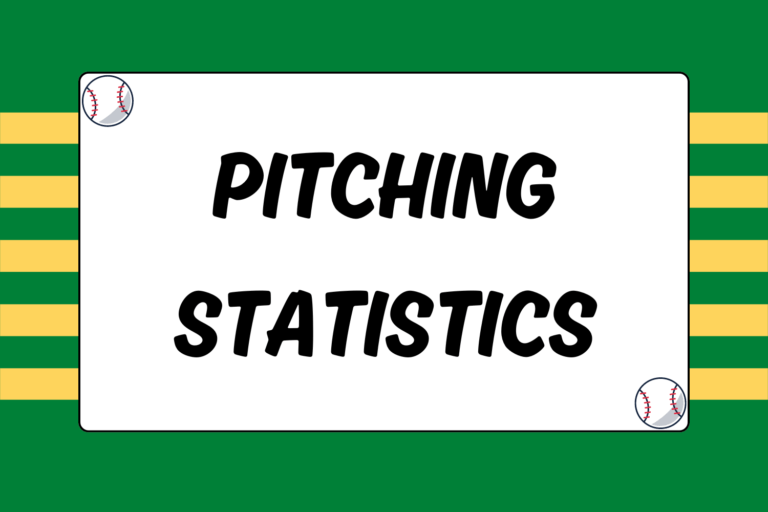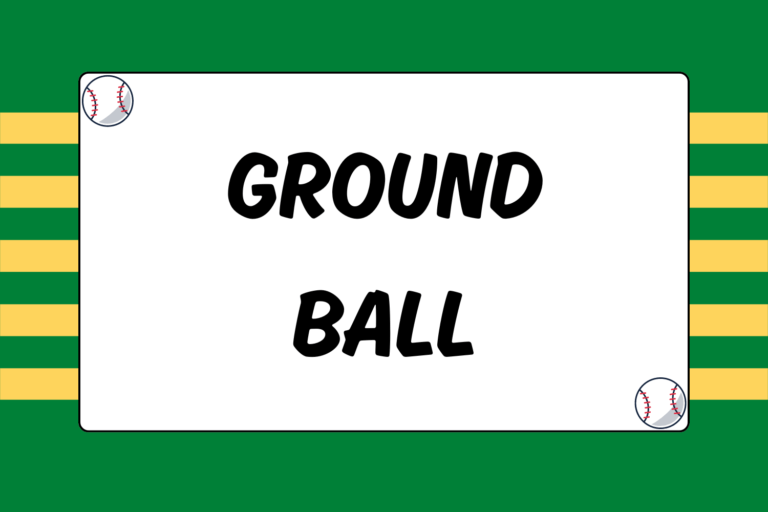“Know what the difference between hitting .250 and .300 is? It’s 25 hits – 25 hits in 500 at-bats is 50 points. There’s six months in a season, that’s about 25 weeks. That means if you get just one extra flare a week – just one – you get a ground ball with eyes, you get a dying quail, just one more dying quail a week … and you’re in Yankee Stadium.”
One of many great lines from a great baseball movie, Crash Davis’ “dying quail” rant from the 1988 film “Bull Durham” illustrates a valid point: Over the course a season, the difference between a mediocre batting average and a good batting average is not monumental. Now as a hitter, your batting average should not be your primary concern; worrying about your stats rarely helps your focus. But for better or worse, batting average has become the statistic by which hitting success is most commonly measured.
Fortunately, baseball is a game that tolerates a great deal of failure on the part of hitters. As Hall of Famer Ted Williams once said, “Baseball is the only field of endeavor where a man can succeed three times out of ten and be considered a good performer.” The Splendid Splinter is right, but the fact remains that when you’re in a slump, everything you hit seems to find someone’s glove and every pitch you see seems to fool you.
So aside from the obvious (but often difficult) solution of simply hitting more line drives, how can you improve your batting average? Well the best advice is simply to practice; get out there and take as many swings as you can. Fortunately there are also some straightforward techniques and tips that may be able to help you get that extra dying quail every week.
Study the Pitcher
Even if you don’t know much about pitching, simply paying attention to the opposing pitcher can be extremely helpful. Most pitchers, especially young ones, are very predictable. They tend to approach batters the same way; they usually have one pitch they trust more than the others; they often have one go-to out pitch; and they sometimes have a certain pitch that they struggle to control. You can learn some of these things before you ever step up to bat.
When you face a pitcher, pay attention to his release point. How well can you pick up the baseball out of his hand? How quickly can you recognize the ball’s rotation? Does his ball tail, or rise, or sink? Is his breaking ball sharp, or sweeping? Does he telegraph his off-speed pitches (perhaps by slowing down his delivery)? Being a good hitter has a lot to do with your mental preparation. You might make an out your first time, but if you pay close attention, the next time you face the same guy, you’ll have a better idea of what to expect and how he might try to get you out. Try to learn something from every at-bat.
Know the Strike Zone
Yes, occasionally pitches outside of the zone will be called strikes, but for the most part, knowing the strike zone will save you from some bad at-bats. An easy way to keep your batting average up is to not swing at bad pitches. The only time you want to swing at pitches out of your preferred zone is when you have two strikes. When you chase pitches, those tend to be the balls you pop up and hit weakly. Don’t be afraid to take a walk. Approach each at-bat with an idea of what pitch and what location you’re looking for, and if you don’t get that pitch, don’t do the pitcher any favors by swinging at something you can’t hit hard.
Get your Foot Down & Keep your Hands Back
The most common reason why you might hit a ball weakly is because you were off balance when you swung. When you’re facing a pitcher with whom you’re unfamiliar – especially a guy who throws hard or has really good stuff – timing will be the most important factor in whether or not you get a hit. Everyone hits a little differently, but the phrase “get your foot down” means you want to take your stride early enough that you can react to a good fastball.
This will start your weight moving forward, which is exactly how pitchers succeed with off-speed pitches. However, even if you get your foot down early and see a breaking ball, keeping your hands back long enough will allow you to take a more balanced and aggressive swing. Having quick and reactive hands is one of the most important qualities to develop if you want to be a dangerous hitter.
The Georgia Peach
If succeeding three times out of 10 makes a hitter good, then Ty Cobb was closer to incredible. The outfielder from Narrows, Georgia batted over .300 for 23 consecutive seasons during his Hall of Fame career. Considered baseball’s greatest hitter during the early years of the twentieth century, Cobb won 11 batting titles, led the American League in hits eight times, and hit over .400 three times, including an astounding .420 mark for his MVP season of 1911. Cobb’s career .366 batting average still holds as the highest in the history of MLB.
Be Ready to Swing at the First Pitch
Patience is an important trait to have as a hitter, and you never want to help the pitcher by swinging at pitches out of the strike zone. However, it’s also not good to get in the habit of keeping the bat on your shoulder for the first pitch and always going deep into counts. If you’re constantly hitting with two strikes, you may see fewer good pitches.
Many times, pitchers are so intent on getting ahead in counts that their first pitch is right down the middle. Often times, the first pitch of the at-bat is the best pitch you’re going to see. If that’s the case, you need to be ready to hit it. Sometimes your best chance to hit a line drive will be on a first-pitch fastball.
Be a Threat to Bunt
Even if you’re not a particularly good bunter, simply making the pitcher and defense think you might bunt will usually work to your advantage. By attempting a drag bunt every once in a while or even just squaring around and pulling the bat back, you put the possibility of a bunt into the mind of the defense. It may rattle the pitcher a bit and cause him to lose command. It may cause the third baseman to move in somewhat, opening up a bigger hole between shortstop and third base. Furthermore, a surprise drag bunt is a great way to get an occasional base hit. So if you can make that part of your game, it will make you an even more productive hitter.
Battle with Two Strikes & Put the Ball in Play
This sounds simple enough, because obviously you don’t want to strike out. The fact is that you cannot possibly get a hit if you swing and miss. However, if you put the ball in play, anything can happen. You might beat out a dribbler, hit a grounder that finds a hole, or a pop-up that gets over an infielder’s head. A “dying quail” and a line drive look the same in the scorebook! Furthermore, battling your tail off and refusing to get beat with two strikes can save your batting average. Pitchers get frustrated when you foul off good pitches or don’t swing at something nasty. The longer you battle, the better chance you have of drawing a walk or getting a good pitch to drive.
Hit the Ball Where it’s Pitched
You might consider yourself a pull hitter or an opposite-field hitter, a power hitter or a singles hitter. Maybe you love fastballs or maybe you sit on hanging curves. That’s all fine, but it’s not a good idea to pigeon-hole yourself like that. The best hitters are versatile and can hit the ball hard to all fields. The most successful hitters excel because they get the barrel to the baseball no matter what. The area where players make mistakes most often in this respect is trying to pull outside pitches. The ability to turn on a ball is great, but it’s even more valuable to be able to stay back and hit outside pitches hard the other way. Plus, being able to cover the entire plate will make it tougher for pitchers to strike you out and beat you with pitches on the corner.
Take the Opportunity for a Sacrifice
Very few players really like to bunt, but it’s a necessary part of the game. So if you’re ever asked to lay down a sacrifice, there’s no use grumbling about it and giving partial effort. If you fail to get the bunt down, odds are you’re going to strike out or hit a pop-up. But if you focus and execute the sacrifice, you can help your team produce runs. Plus, it doesn’t hurt your average one bit.
In addition, recognize what needs to be done in certain situations. Everyone wants to help their team by getting hits, but sometimes it requires even less than that. If you have a runner on third with less than two outs, a fly ball to the outfield or a grounder up the middle should get your team a run. If you take advantage of that opportunity and don’t try to do too much, you can earn yourself an RBI without lowering your batting average.
Take Away the Inside Corner
Pitchers hate it when batters crowd the plate, and that’s exactly why it can be a good idea! Now no one likes getting hit with a pitch (although if you don’t mind it, HBPs are a great way to get on base and help your team), but taking away the inside corner doesn’t necessarily mean leaning into pitches. The fact is, most pitchers will be less likely to throw to the inside corner if you are right on the plate. It will give you a mental edge over the man on the mound, and will allow you to more easily cover the outside corner.
Get on Top of the Baseball
The easiest way to get a base hit is by hitting line drives, and the way to hit line drives is to develop a short, level swing. Home runs are awesome, but they rarely happen when you’re explicitly trying to hit them. If you want to improve your batting average, it’s much smarter to forget about hitting homers and focus on getting on top of the baseball. Ground balls are more likely than fly balls to be base hits, and they also require more work on the part of the defense.
Get Faster
It’s a simple and obvious fact that players who run well have a better chance to beat out base hits than players who move like molasses. Of course not everyone is gifted with natural speed, but believe it or not, it’s a skill you can improve. Running and sprinting regularly will get you in better shape.
Building muscle strength in your legs, glutes, and abdominals will make you faster. And there are several quickness and agility exercises that will make you more explosive on the base paths. Even if you can only get a split second faster, that can make the difference between a ground out and an infield single.
Have Fun!
Above all else, you need to realize that it’s only a game, and enjoy yourself when you’re at the plate. Trust your abilities and don’t out-think yourself in the batter’s box. And in the wise words of former Major Leaguer Woodie Held, “Don’t forget to swing hard, in case you hit the ball.”





